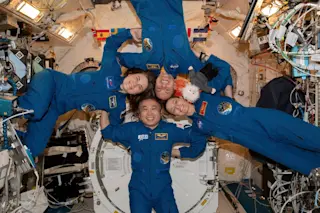Within the next few decades, NASA aims to land humans on the Moon, set up a lunar colony and use the lessons learned to send people to Mars as part of its Artemis program.
While researchers know that space travel can stress space crew members both physically and mentally and test their ability to work together in close quarters, missions to Mars will amplify these challenges. Mars is far away – millions of miles from Earth– and a mission to the red planet will take two to two and a half years, between travel time and the Mars surface exploration itself.
As a psychiatrist who has studiedspace crew member interactionsin orbit, I’m interested in the stressors that will occur during a Mars mission and how to mitigate them for the benefit of future space travelers.
Given the great distance to Mars, two-way communication between crew members and Earthwill take about ...














